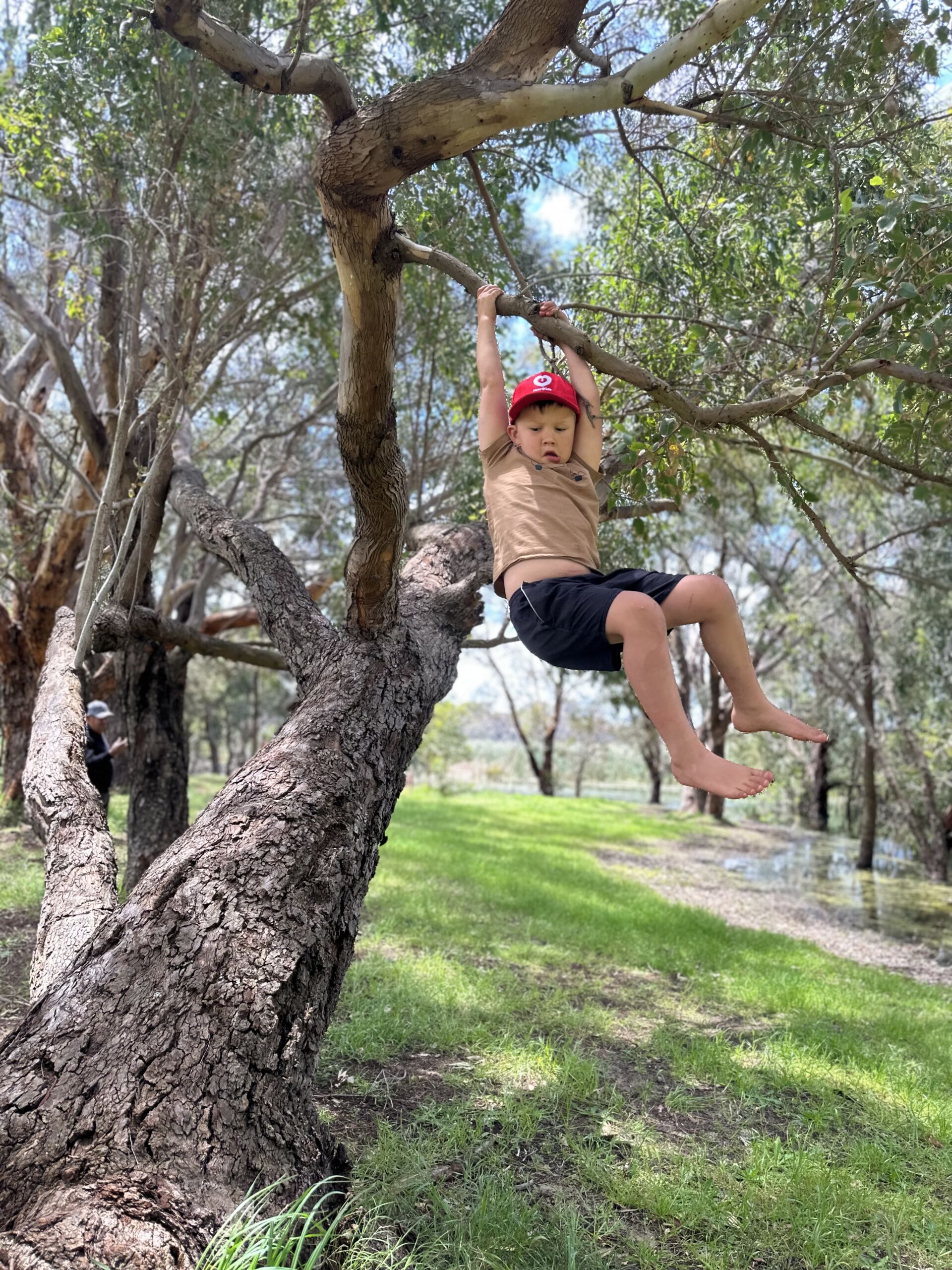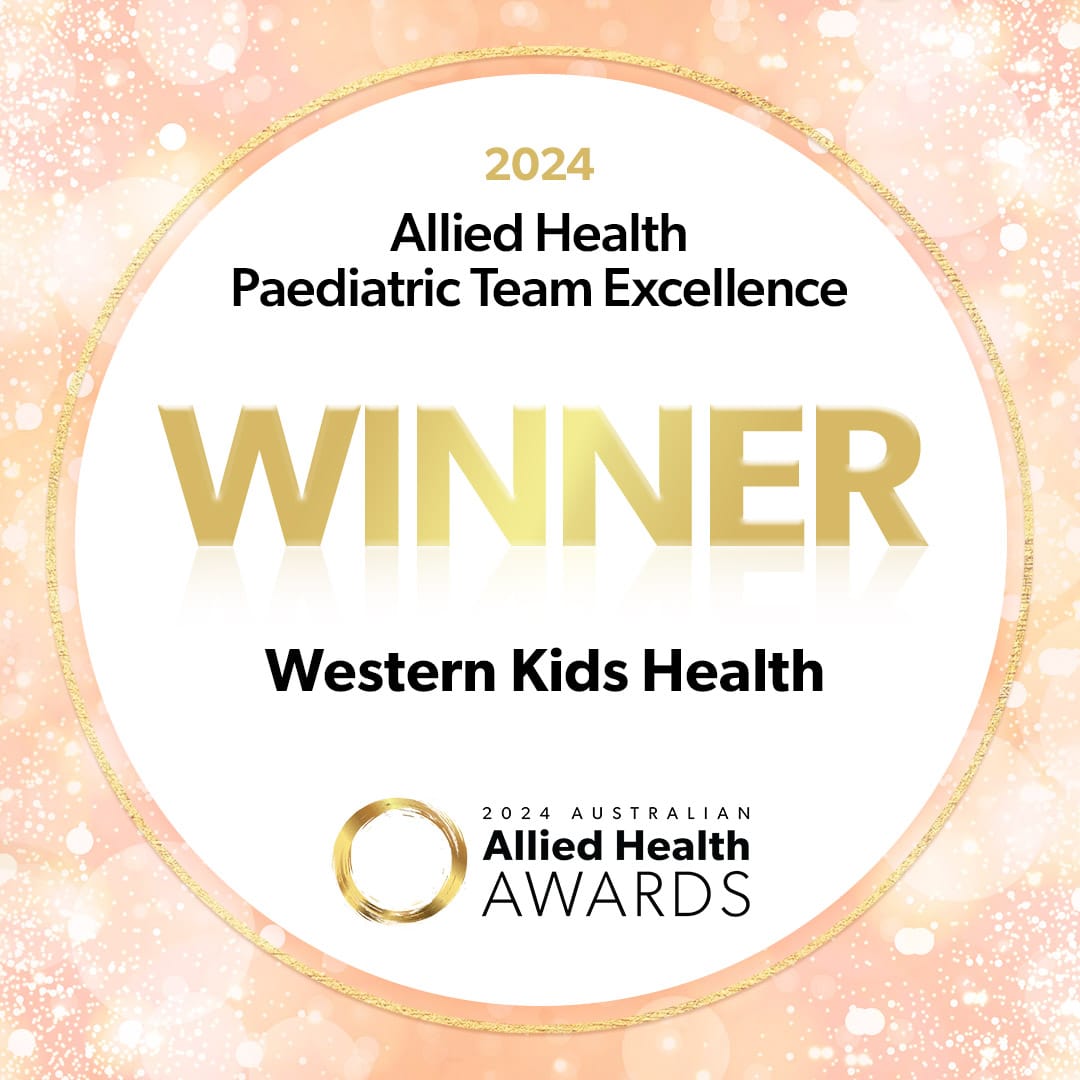
Australian Children have scored a D- for Physical Activity

Active Healthy Kids Australia has released their 2022 Report Card, and the results are not looking good. According to AHKA, very few kids in Australia are meeting physical activity guidelines, having scored overall a D– for the last 9 years, with only 10% of kids aged 5-18 getting at least 60 minutes of physical activity per day.
As a paediatric physiotherapist, this devastates me. In my clinical work I am seeing more and more kids and teens who are physically weak, lacking motor skills and even confidence in their own body’s capabilities. I’m seeing more children with joint aches and pains, headaches, and a staggering increase in those with underlying anxiety.
This does not bode well for the future health and wellbeing of our children.
“What is going on? Why?” I hear you ask.
I ask myself the same question.
Despite these concerning numbers, the intense advocacy efforts from non-government and non-profit organisations, institutes and professional societies, the Federal Government is yet to establish a comprehensive National Physical Activity Plan (AHKA).
There has been a huge push to get kids active in sport and at school.
This is evident in that we scored a great B- for organised sport.
This, to be honest, doesn’t surprise me– a vast majority of children are enrolled in an extra-curricular sport across their schooling years, yet the amount children “do” during sport, how many times a week they do sport and the intensity all varies.
For all the structured sport our kids are doing we are only scoring a D+ on physical (aerobic and muscular) fitness, below average relative to international norms.
Confused?
It is a common misconception that structured, organised sport is all children need for physical activity.
Playing a sport does not mean your child will automatically get fitter, stronger or have better motor skills. Children are told what to do, how to do it, when to do it… which doesn’t leave much room for imagination, risk or play.
We see an increased reliance on organised, structured sport to booster physical activity levels and motor skills from the early years with enrolments in gym classes, swimming lessons and toddler sports which continues throughout early childhood. Don’t get me wrong, I love a bit of toddler gym but it’s more for my mental health, to get out of the house and give my child something to do. That 45-minute session per week doesn’t really have the dosage needed to impact their physical abilities. As a paediatric physiotherapist I know that practicing a sport once a week isn’t going to help their running, jumping, throwing or catching. It’s the consistent daily practice of mucking around with the ball, playing chasey with your friends (so many sprints!) and the drive to participate socially.
So many kids drop out of organised sports in later primary and early high school and even though they’ve been “playing for years” they don’t have the fundamental skills.
In Western Society, we as parents face immense pressure to maximise our child’s opportunities and ensure that they are constantly engaged in formalised structured sports… but is this really maximising their developmental opportunities?
I wonder what would happen if we drove the same commitment to unstructured outdoor play in those early years and beyond?
Children are wired to play.
Fulfilment of this intrinsic biological urge to play, results in an increased capacity for processing and developing pro-social brains that understand how to interact with others and the environment they live in.
There is a growing body of literature that outdoor play has immense developmental benefits for children, improving motor and physical skills, body schema and self-confidence.
Yet, we are seeing a significant decline in outdoor, adventurous
It’s about our schools.
In the same sense that we cannot rely on organised sports to improve our child’s motor skills, we cannot rely on schools either. School only received a C+ on the AHKA report card.
Physical activity is constantly pushed out of the curriculum by numeracy and literacy, yet we have known, for years and years, from a significant amount of research, that increasing physical activity in the curriculum does not negatively affect numeracy and literacy… in fact more physical activity in the day makes our kids smarter!
Imagine the impact if the government finally got around to establishing a funded National Physical Activity Plan. Scaling up physical activity in schools. Standardising the amounts and types of Physical Activity across the school day. Supporting afterschool activities. Developing a short- and long-term monitoring and surveillance of physical activity in schools. Wouldn’t that be something?
Findings from the Childhood Determinants of Adult Health (CDAH) study show that children aged 7–15 years with higher levels of physical fitness are less likely to develop risk factors for diabetes and heart attack, such as prediabetes, metabolic syndrome, insulin resistance, beta cell function, obesity, inflammation, and blood lipids, up to around 30 years later in adulthood.
However, in Australia, we do not systematically measure or monitor children’s physical fitness levels.
Ignorance is bliss yeah?
There is a heavy expectation on PE teachers to produce an “outcome” where all children are reaching certain levels by certain ages… we tend to forget the diversity in strengths that need to be celebrated.
My 6-year-olds confidence took a hit last year in his report card for PE. He had a big juvenile idiopathic arthritis flare in T2 and it shook his confidence for running… even though he can ride 16km on his bike around Rottnest, scale a 4m tall tree and do the Funky Monkey combat ladder with ease he doesn’t enjoy running races and PE because “he isn’t good”.
I wonder what would happen if we shifted the goal to be “active for life through enjoying physical activity”, rather than being good at sport?


It’s about our community.
Over the years we have seen our playgrounds change, designed to be “safer” as our culture adopts a zero-risk approach. But is keeping children safe, free from any injury and encountering less and less challenging situations, going to accommodate their developmental needs?
I wonder what would happen if we encouraged our children to try new things, test their limits and adjust their behavioural responses to situations… like in outdoor and risky play?
I have seen a shift here in WA towards nature playgrounds and challenging playground sets (such as the Funky Monkey Bars inspiring the next Ninja Warrior!) being installed in schools.
But the regular local park? That plastic slide, swing and see saw just aren’t cutting it. Even my 2-year-old is over it. Some of the great parks are pitched too high. In fact, some days I drive around to find one that is suitable for my 6- and 2-year-old because I want to be able to step back and let them independently explore, test their abilities and take risks.
Imagine if federal and state governments overhauled our parks and playgrounds, from the typical plastic slide and steps set, to something that is actually accessible and meets the needs of our children and young people, across age, socio-economic status, developmental abilities and is disability inclusive?
Spaces that foster social connectedness to help facilitate meaningful interactions to develop feelings of belonging; increase perceptions of safety; and create more active and healthy communities
Children need access to diverse and interconnected spaces to enable their independent mobility, daily active play, and to develop their physical literacy.
Let’s stop battling screen time.
I can’t write a blog about physical activity without mentioning screen time. It is embedded in our lives, in every facet. From on our fridges and car stereos, to our phones and TV’s. It’s everywhere. Screens have become integrated into every part of life — communication, learning and entertainment. We are constantly battling it. Resisting it. It’s like swimming in a rip. It’s exhausting.
Instead of focusing on the negative, let’s flip our thinking and work on promoting more outdoor time in general (green time).If we committed to green time ≥ screen time, can you imagine the positive impact on our children’s wellbeing? The 1000 Hours Outside Challenge is one of my favourite initiatives to support this – linked here
I recently started back working full-time (and some) and I wanted to provide my kids with more opportunities to be active outside at home because I am committed to increasing green time.
We installed a Funky Monkey Bar set in our backyard last month – this way when my kids are up at the crack of dawn they can get outside and get moving. As your child grows you can add more bits, more challenges. My 2-year-old is already navigating the cargo net and standing on top of the parallel bars – at first with supervision, but now I know she has the skills and understanding she is out there on her own testing her abilities.
 As a paeds physio, I love climbing frames and monkey bars for kids. Providing my children with opportunities to engage in climbing and upper body strength activities, in my opinion, critical.
As a paeds physio, I love climbing frames and monkey bars for kids. Providing my children with opportunities to engage in climbing and upper body strength activities, in my opinion, critical.
Kids (and us as adults) rarely do work with our arms above our heads and these muscles and bones need this stimulation for development. It is also the opposite of what your body does when “on screens”. The problem is not how to fix your child’s posture while they are on a screen, it’s about increasing your child’s physical activity and the strength of the opposing muscles!
Climbing is “risky play” and risky play builds problem solving, decision making, risk analysis, imagination, physical strength, emotional regulation and resilience. Although I would prefer my kids to be out in nature in unstructured environment, monkey bars at home are providing them with the strength and challenges they need to build their strength & skills. Why am I working on providing these opportunities at home? Well let’s be honest, gone are the days we let our kids roam the street and parks, climbing trees till dark.
We are scared.
The 24-hour news cycle is killing me as a parent. Every day on news sites and social media I read the not nice things. It is downright scary.
It makes me as a parent adverse to letting my child play unsupervised (anywhere – not just at the park) or ride to school. As a paediatric physio I know the huge benefits of outdoor and risky play and kids learning to navigate their environment independently. I am constantly risk reframing.
I wonder what would happen if we supported parents with initiatives to promote outdoor and risky play?
There are some wonderful programs out there, but they are not supported, well known or funded.
I mean it’s us, parents, that have the huge impact on our children’s physical activity possibilities through the opportunities we provide (or allow).
I have heard from so many parents that they are nervous to engage in “risky” play, they are fearful of their child getting hurt.
What’s the cost of not providing the opportunity of “risky play”?
For me this cost of a minor injury like cuts, bumps, bruises or even a broken bone is outweighed by the benefit of my child learning their what their body is capable of, practicing regulating their emotions, building confidence, problem solving and resilience.

But I am busy. Our society is busy.
Our kids need support to get outdoors, and our younger kids need more parental supervision to engage in risky play.
Some days I just struggle to keep my children alive- (jokes!) I work full time running my own business and gone are the days when I could spend hours supporting their adventuring.
My role in supporting my child’s physical activity is intimately bound up in my workplace structure, our family economic considerations and my own love for being active. But I give myself more credit than its due.
When it comes to physical activity, we as parents clearly have some role: we provide opportunities. We provide active play equipment at home, take our kids to the park and outdoors, play taxi to our children to and from sports events, we pay for their sports gear and memberships, role model an active lifestyle, and we sometimes play with our kids.
But the importance of peers is undervalued.
I know I did just say that we as parents, have the huge impact on our children’s physical activity possibilities through the opportunities we provide… but our children won’t necessarily take these opportunities. I have been to the park with my son, and he’s literally built sandcastles for half an hour… a friend arrives and suddenly they are sprinting across the parks battling pirates.
The influence of peers isn’t just evident in school aged children.
Take for example my mother’s group. Little Miss M wasn’t born with the natural climbing and willingness to give it a go as the rest of our group, and initially as a toddler she sat back. However, with the other kids determined to explore and try everything, helping and encouraging her, Miss M’s confidence grew and she’s now a force to be reckoned with. Miss M’s mum tried to provide opportunities and support yet ultimately it was the drive to join in, to belong, that led to these newfound skills.
I wonder if somehow, we could make time for not just our own kids to have active free play but with their friends?
This problem is not an easy fix. There is no one answer. It isn’t easy. There are multiple systems needing to change.
Simply put, our children are not getting the exposure to physical activity and the challenges they need – they aren’t getting the opportunities to develop strength, fitness and motor skills.
It’s going to need a lot of work
I hope that by 2026 we are not getting another D- on our AHKA report card.
But I will let you in on a secret.
If you are a parent that means you have a superpower.
You can choose the opportunities you provide your child.
You can choose to make time for active free play with friends.
You can choose to aim for green time > screen time.
So what do you choose?
Written by Nicole Pates
Managing Director and Paediatric Physiotherapist at Western Kids Health
Instagram @nicole_kidsphysio
nicole@westernkidshealth.com
References:
Active Healthy Kids Australia (2022). Reboot! Reimagining Physically Active Lives: 2022 Australian Report Card on Physical Activity for Children and Young People. Melbourne, Victoria: Active Healthy Kids Australia https://doi.org/10.21153/ahka2022
Jidovtseff B, Pirard F, Martin A, McCrorie P, Vidal A, Pools E. Parental Assessment of Benefits and of Dangers Determines Children’s Permission to Play Outdoors. Int J Environ Res Public Health. 2022 Sep 12;19(18):11467. doi: 10.3390/ijerph191811467. PMID: 36141739; PMCID: PMC9517668.
Okely AD, Salmon J, Vella S, Cliff D, Timperio A, Tremblay M, Trost S, Shilton T, Hinkley T, Ridgers N. A Systematic Review to update the Australian Physical Activity Guidelines for Children and Young People. Canberra, Australia: Commonwealth of Australia 2012.
Timmons BW, LeBlanc AG, Carson V, Connor Gorber S, Dillman C, Janssen I, Kho ME, Spence JC, Stearns JA, Tremblay MS. Systematic review of physical activity and health in the early years (aged 0–4 years). Applied Physiology, Nutrition, and Metabolism. 2012;37(4):773-92.
Biddle SJH, Asare M. Physical activity and mental health in children and adolescents: a review of reviews. British Journal of Sports Medicine. 2011;45(11):886-95.
Donnelly JE, Hillman CH, Castelli D, Etnier JL, Lee S, Tomporowski P, Lambourne K, Szabo-Reed AN. Physical Activity, Fitness, Cognitive Function, and Academic Achievement in Children: A Systematic Review. Medicine & Science in Sports & Exercise. 2016;48(6):1223-4
Kuzik N, Poitras VJ, Tremblay MS, Lee E-Y, Hunter S, Carson V. Systematic review of the relationships between combinations of movement behaviours and health indicators in the early years (0-4 years). BMC Public Health. 2017;17(5):849.
Poitras VJ, Gray CE, Borghese MM, Carson V, Chaput J-P, Janssen I, Katzmarzyk PT, Pate RR, Gorber SC, Kho ME, et al. Systematic review of the relationships between objectively measured physical activity and health indicators in school-aged children and youth. Applied Physiology, Nutrition, and Metabolism. 2016;41(6 (Suppl. 3)):S197-S239.[/vc_column_text][/vc_column][/vc_row]






